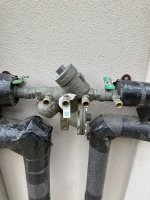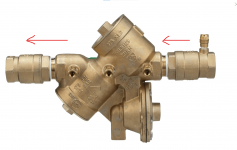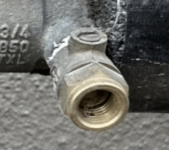- Jul 2, 2018
- 648
- Pool Size
- 20000
- Surface
- Plaster
- Chlorine
- Salt Water Generator
- SWG Type
- Pentair Intellichlor IC-40
The city requires a back flow preventer be hooked up to my autofill line. The pool builder installed one. The problem is that, fairly often, it starts to vent water from the CITY side. I know it's from the city, because I tasted it (not salty at all) and also my pool water level was well below the autoflow so no way it could be from the pool.
I called someone and said that I think it's installed backwards. Why would you ever want to vent out the city water? Isn't this suppose to ensure that pool water doesn't end up in the water supply? I'm ok with city water going into the pool (that's why I have the autofill).
So...I've turned off my autofill. I was tired of listening to our constant wasting of water.
My question is, is this true? Is this really how they are designed, or do I have a bad one? If it is how they are designed, any engineers want to start a back flow preventer business?
Thanks.
I called someone and said that I think it's installed backwards. Why would you ever want to vent out the city water? Isn't this suppose to ensure that pool water doesn't end up in the water supply? I'm ok with city water going into the pool (that's why I have the autofill).
So...I've turned off my autofill. I was tired of listening to our constant wasting of water.
My question is, is this true? Is this really how they are designed, or do I have a bad one? If it is how they are designed, any engineers want to start a back flow preventer business?
Thanks.





